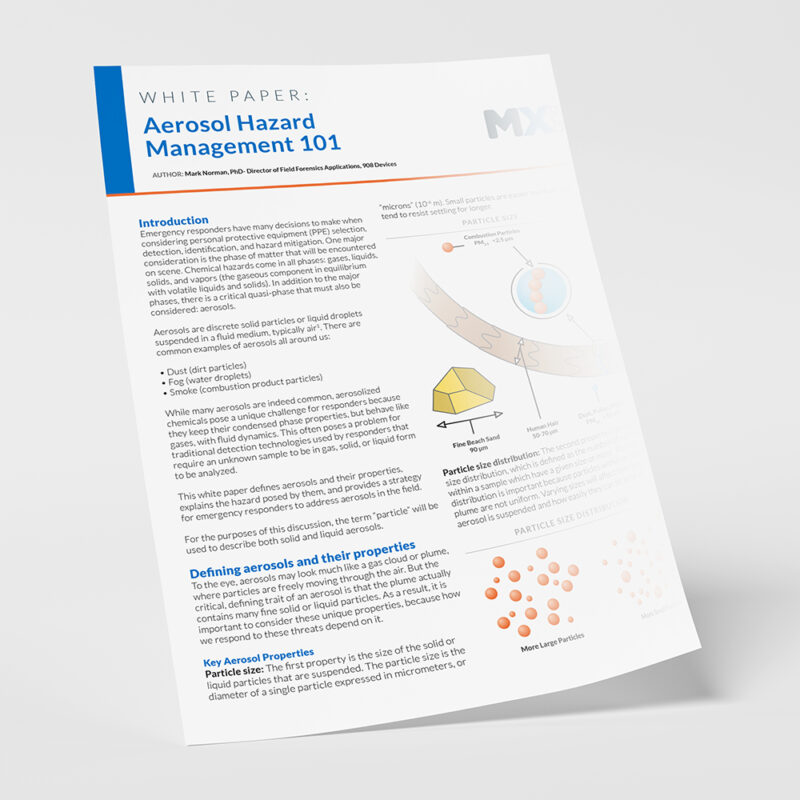Aerosol Hazard Management 101
Read this white paper to learn more about the hazard posed by aerosolized chemicals. You will learn about aerosols and their properties and how to successfully address them in the field.

Emergency responders face unique challenges when selecting personal protective equipment (PPE) and responding to hazardous materials, especially aerosols. Aerosols, which consist of solid or liquid particles suspended in the air, behave like gases but retain the properties of solids or liquids. These particles pose significant risks due to their ability to remain airborne and be inhaled, potentially leading to severe health hazards. Traditional detection methods struggle to identify aerosolized chemicals, as they typically require substances to be in solid, liquid, or gas form. Recent advancements, such as the MX908® with the Aero module, allow responders to detect and identify aerosolized threats in real-time, improving safety and response effectiveness. This technology helps manage the complexities of aerosol hazards by providing accurate, on-site identification of airborne chemical threats, including toxic materials like fentanyl and chemical warfare agents.
Subscribe to Our Communications
Signup to receive new product updates, technical tips and more.